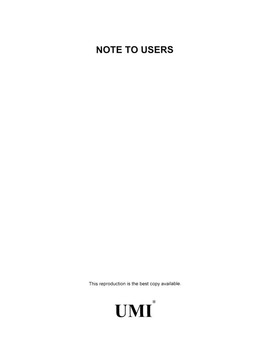| dc.contributor.advisor | Sluss, James, | en_US |
| dc.contributor.advisor | Havlicek, Joe, | en_US |
| dc.contributor.author | Mu, Guangwei. | en_US |
| dc.date.accessioned | 2013-08-16T12:19:24Z | |
| dc.date.available | 2013-08-16T12:19:24Z | |
| dc.date.issued | 2004 | en_US |
| dc.identifier.uri | https://hdl.handle.net/11244/728 | |
| dc.description.abstract | From its initial conception to deployment, the Wide Area Augmentation System (WAAS) was hailed as revolutionary for the navigation industry. However, the WAAS deployment effort has suffered significant delays and budget overruns. The reason for these misfortunes lies in the demanding mandates on the performance of the WAAS system. In the long process of getting WAAS commissioned, availability has always been the metric that holds the system back from achieving the promised capability. The inherent tradeoff between integrity and availability is the major reason that the VPL and HPL algorithms need to be improved. | en_US |
| dc.description.abstract | The integrity algorithms are well defined in the WAAS Minimum Operational Performance Standards (MOPS). However, our experimental data clearly indicate that the MOPS VPL and HPL algorithms are over-conservative. This lack of compactness from the MOPS introduces unnecessary epochs of the system being unavailable. To improve the system performance, the intuitive approach is through the range/correction domain since these factors can be observed, controlled and manipulated to improve the system performance in individual cases. However, we need a better error model and better understanding of the threat model, i.e. we need to know more about the nature of all error sources and the threats the WAAS faces, which is very difficult to accomplish due to the stochastic natures of these sources. Therefore, it is unlikely that a range/correction domain solution can be applied to a wide range of applications while having significant improvement for the system performance. Besides, it is still subject to the hindrance that the WAAS message structure might need to be changed or adjusted to take advantage of the new development. | en_US |
| dc.description.abstract | The new VPL and HPL measure developed in this dissertation is based on the MOPS algorithms and improves upon them. The new VPL and HPL algorithms are developed by taking advantage of the WAAS correction error's stochastic characteristics and Kalman filtering. Applied to real WAAS data, this methodology shows significant improvement over the standardized MOPS algorithms. It improves the system availability and continuity without penalizing integrity. | en_US |
| dc.description.abstract | In this dissertation, a new position domain algorithm is presented to improve the MOPS integrity methodology in hopes of improving the overall system performance. The information needed to do this is already in the WAAS messages. Therefore, this new algorithm will not require any change of the existing correction messaging. | en_US |
| dc.format.extent | xv, 185 leaves : | en_US |
| dc.subject | Engineering, Aerospace. | en_US |
| dc.subject | Global Positioning System. | en_US |
| dc.subject | Engineering, Electronics and Electrical. | en_US |
| dc.subject | Navigation (Aeronautics) | en_US |
| dc.subject | Air traffic control. | en_US |
| dc.title | WAAS error, integrity and availability modeling for GPS based aircraft landing system. | en_US |
| dc.type | Thesis | en_US |
| dc.thesis.degree | Ph.D. | en_US |
| dc.thesis.degreeDiscipline | School of Electrical and Computer Engineering | en_US |
| dc.note | Source: Dissertation Abstracts International, Volume: 65-02, Section: B, page: 0930. | en_US |
| dc.note | Advisers: Joe Havlicek; James Sluss. | en_US |
| ou.identifier | (UMI)AAI3122312 | en_US |
| ou.group | College of Engineering::School of Electrical and Computer Engineering | |
